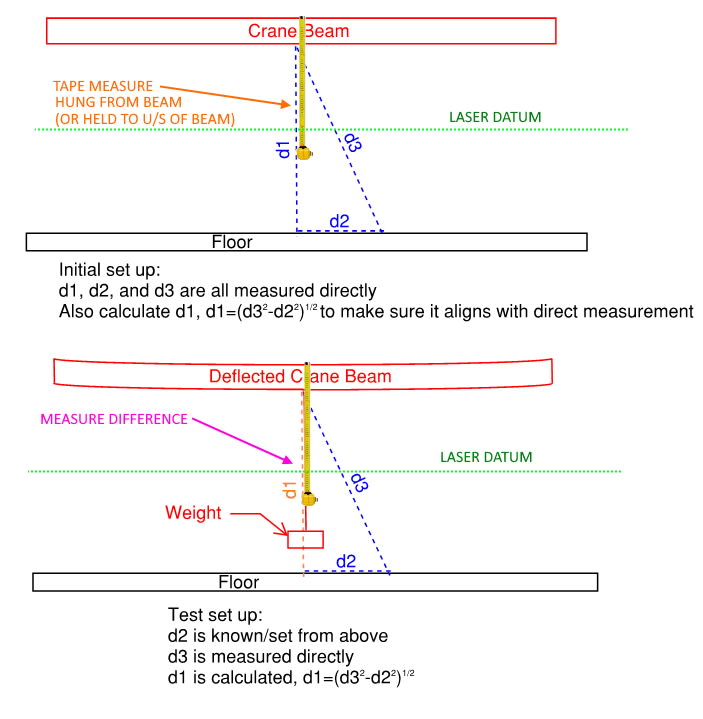any experts here who can advise on how to measure the deflection for the overhead crane under load test.
Measuring the distance under no load condition is easy with a laser distance measurer. but the issue arises when the distance needs to be measured in the same place, when the crane is lifting the test weights, as the line of sight is blocked by the test weight. what would be an easy technique to measure the deflection?
Measuring the distance under no load condition is easy with a laser distance measurer. but the issue arises when the distance needs to be measured in the same place, when the crane is lifting the test weights, as the line of sight is blocked by the test weight. what would be an easy technique to measure the deflection?


